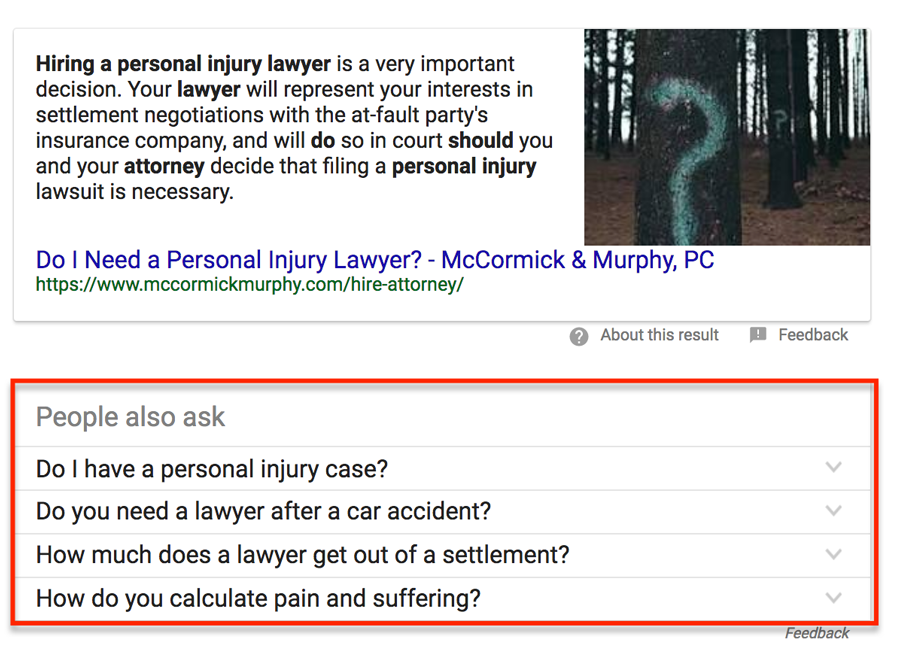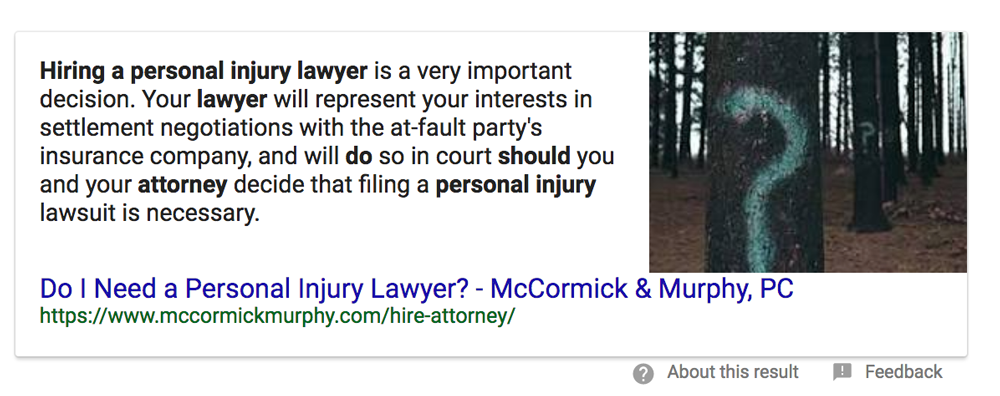Recently, Google quietly made a change in organic search results with the additional inclusion of more “people also search for” boxes.
This new addition appears in search results when a user conducts an organic search, clicks on a result, and then returns back to the search results page. You can see an example of what this looks like below. The pink section represents the new feature you would see.
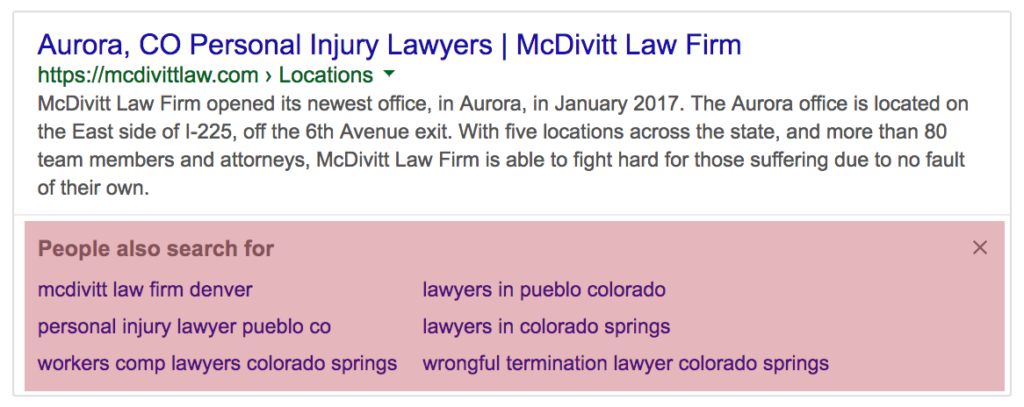
From Google’s point of view, this implies that the searcher did not find what they were looking for when they visited the first website they clicked on and are now providing alternative searches that may be relevant to your search query.
Is This A New Feature?
When doing a Google Search there are several ways that Google tries to send additional relevant queries to searchers. Right now those include the following:
- Searches Related To: Displays at the bottom of the organic search results.
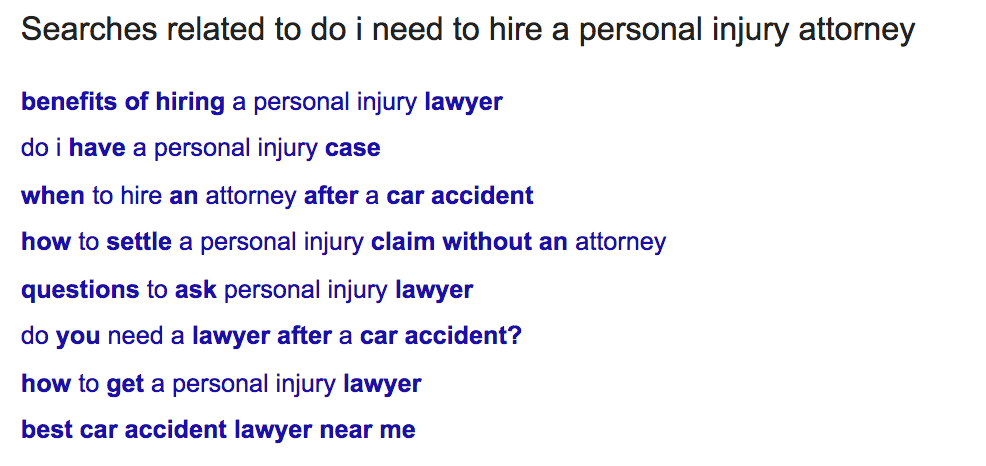
- People Also Ask Section: The placement for this box seems to vary.

- The New “People Also Search For”: Displays only after you bounce back to the search results after clicking on a website.

You can see that there are several different ways that Google is trying to provide searchers with more options that might be more relevant to their query.
So after looking at this feature deeper, it seems that is, in fact, a brand new feature and it can provide unique results from the other related search options that previously existed.
How Do The Related Search Options Compare?
I wanted to take a deeper dive and get an idea of how these related searches differ from what was already available. To do this I looked at the example “Do I Need To Hire A Car Accident Lawyer?”.
After conducting this search I was presented with the related searches, people also ask, and people also search for options on the search results page after clicking back from the first result.
This showed me that for this single search, Google provided me with 18 total additional searches I could try and click on. Google clearly sees these as related topics and it was surprising to me that there were only 2 searches that overlapped.
This means that for this one search query, Google provided me with 16 unique related topics.
You can see an example of this below with a list of the questions it curated along with a visual example of each result on the search page.

How You Can Use This To Your Advantage
There are some clear benefits of reviewing this data. First, from a keyword research perspective, you can basically get unlimited topics just by searching and looking at what Google values. But here are my main takeaways from this analysis:
- Featured snippets do not appear to be affected by this and are therefore even more awesome.
When I tried to replicate the click through and back button test for featured snippets the “People also search for” box did not display.
- If people are bouncing, maybe you can look at these related queries?
Another thought I had is that if you’re seeing a high bounce rate or quick exits from organic landing pages you should consider making the page more useful for users. If you need to know how you should consider reviewing what Google is associating to the search query in related searches.But then again, why wait? - Maybe you should just create content around the related queries
Another strategy is to get to work and just start expanding the information on your website around topics related to the primary topic. I mean, the information is there. Why wait?
Overall I think this information is incredible and there are lots of ways to use this data. Imagine the possibilities? What if a potential customer finds you in organic search results, clicks your result, but doesn’t find what they were searching for. Then they click on a related query, and boom you are there again. That can be very powerful marketing.
Want to replicate the “People Also Search For”? Here’s how:
Step 1: Go to Google and conduct a search. My search was for Denver Personal Injury Lawyer. I then clicked on the first organic result which is highlighted below.

Step 2: After visiting the page I clicked the browser back button. I was then shown the example below:
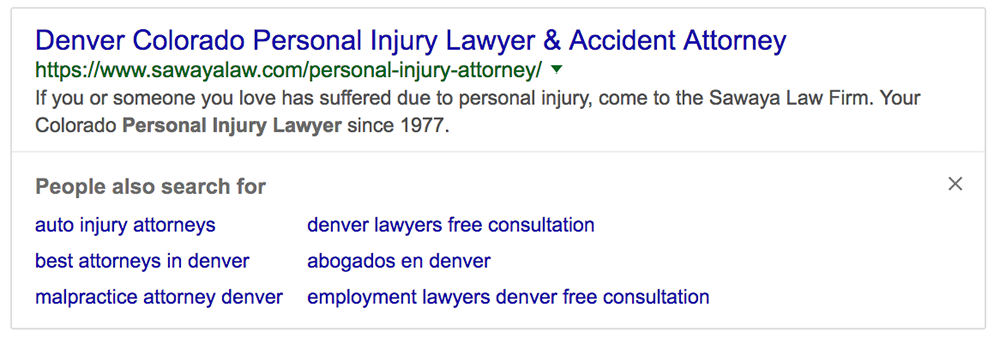
What are your feelings or thoughts about this new feature?
What downsides am I missing about this new feature? What are your thoughts on the matter? Let me know in the comments below:

